An HIT Moment with … Michael Stearns
An HIT Moment with … is a quick interview with someone we find interesting. Michael Stearns, MD, CPC is president and CEO of e-MDs.
Vendor executives have expressed their opinions on the best use of the proposed federal stimulus dollars set aside for healthcare technology, most of which align closely with the business interests of their respective companies. Is healthcare IT a good investment, is evidence adequate to prove so, and what technologies would provide the biggest bang for the buck in terms of patient outcomes and cost savings? 
Interesting question. The majority of healthcare policy makers, including the Institute of Medicine, feel that information technology will play an essential role in improving the quality and efficiency of healthcare in this country. The transformation of care at Veterans Administration hospitals, including a reported 80% reduction in medication errors since the implementation of their EHR system, is one of the most striking examples of the value of HIT (health information technology). Those of us who remember trying to care for very sick patients at VA’s during the “dark ages” of incomplete and often lost records can appreciate this transformation.
Patient outcomes will benefit the most from provider access to legible and complete information, clinical decision support tools, alerts and reminders, and improved coordination of care.
Cost savings should result from fewer hospitalizations of chronically ill patients through better care coordination, greater patient and family involvement in providing care, the reduction in medical errors related to information access and clinical decision support tools that guide physicians to choose low cost tests and treatments of equal efficacy. In the (hopefully) near future, it would be nice to see a level of medico-legal protection for care providers who demonstrate adherence to established clinical guidelines. In many cases this would free clinicians from ordering low yield tests as a defensive strategy.
Part of the federal investment in healthcare IT includes funding to research its effectiveness from the standpoint of patient safety and reduced costs. The value of this exercise is not so much proving that HIT is a good investment, but rather identifying areas where improvements in current systems can offer the greatest benefit. Smart vendors will use the knowledge gained from HIT research to create solutions for areas in greatest need for improvement.
What technical and standards work is needed to allow providers to exchange information effectively?
The CCD standard is a significant first step towards interoperability as certified ambulatory vendors have been compelled to support one unique standard that will markedly benefit the sharing of clinical data through health information exchanges. HL7, IHE, NHIN, CCHIT, and HITSP have all made significant progress; primarily through the efforts of volunteers. Hopefully the HIT Standards Committee that is being formed and the money committed to NIST will accelerate standards efforts. The additional funds that have been made available should allow stakeholders to thoroughly address the data integrity challenges associated with the use of HIEs.
A key element of most healthcare reform proposals is analyzing data to find opportunities for improvement. Do we have the right quantity and quality of data available and are we ready to use it with the appropriate privacy protections?
This is an area of particular interest to e-MDs given that several members of our senior management team have backgrounds in academic medicine and formal training in medical informatics.
In our opinion we need to greatly increase the amount of structured and usable data being captured in electronic medical records. SNOMED CT has proven difficult to implement in EHR applications, but its artificial intelligence underpinnings and canonical structure make it ideal for reporting and research. This has given rise to the development of interface terminologies that facilitate the use of natural sounding clinical expressions that allow data to be stored as concepts mapped to external vocabularies such as SNOMED CT or LOINC. We are taking what we believe is a leadership role in this area, including the development of our own interface terminology that we plan to make open source. It will be called the “Medicapaedia.”
Patient Privacy will be critical. The United Kingdom’s National Health Service lost the confidence of physicians when they learned that the government was not taking adequate steps to protect patient information. They have had to promise fairly draconian consent management policies and other measures in an effort to regain trust. We should learn from their experiences.
Is lack of EMR and e-prescribing adoption caused by inefficient system design, misaligned incentives, or physician resistance?
The majority of industrialized countries have far greater EHR adoption rates than the United States, despite the fact that their systems are in most cases markedly inferior to U.S. systems. A group from New Zealand visited us recently and said our EHR was significantly superior to their current systems. Despite the lack of highly refined EHRs 95% of their physicians use EHRs for all patient encounters. They could not even imagine practicing medicine on paper. Based on this, one would think that a lack of incentives and/or disincentives for not using EHRs is a big part of the low adoption rate in the US. Competition over EHRs is far greater in this country than anywhere else in the world and our systems have improved dramatically over the past 10 years. Nonetheless, to get our rather demanding physicians over the hump, EHR vendors need to embrace system design principles employed by software designers in other industries. We have invested heavily in a firm that specializes in what is referred to as “cognitive engineering,” and the results have been fairly dramatic. The “carrot and stick” approach outlined in the incentive package for EHR use will hopefully overcome physician resistance, especially as vendors get smarter, competition increases, and systems get easier to use.
The physician EMR market is heating up, with arguments about legacy vs. upstart vendors, CCHIT-certified vs. non-certified products, and EMRs designed for billing and malpractice defense rather than optimal patient care. What overview would you give about today’s market and what predictions do you have for the next 3-5 years?
That is a loaded question! Developing an EMR that is reliable, safe and secure and meets the usability and certification requirements is a major undertaking. Every vendor was an upstart at one time in their history. Companies with the right level of funding and prior experience in EMR design, implementation, and support have a decent chance of surviving, given the incentives that will be available. If this fosters disruptive innovation that benefits healthcare then everyone will benefit, in particular patients.
Certification will be important, however. Practices who do not see the writing on the wall and then decide to wait until next year to select and implement an EHR may find that established vendors have long waiting lists. This will create an opportunity for start-ups but there needs to be some level of protection or poorly designed systems that could compromise patient care will make their way into clinics. Any certification process needs to include testing of minimum feature sets for functionality, security and privacy, consistent with what CCHIT currently provides. However, it would be helpful if the certification process was expanded to include usability.
To reach the stated goals of implementation states in Mr. Obama’s plan, vendors will be required to make major investments in training personnel, training methodologies, support personnel, and technologies that allow EHRs to be installed and supported with minimal effort and cost. EHRs will need to be redesigned based on research and proven software design methodologies such as cognitive engineering. Hopefully specialists will finally get the attention they deserve. We fully anticipate that certification requirements pertaining to functionality, product ease-of-use, standards compliance, research, reporting, interoperability, adherence to evidenced-based medicine guidelines, and protecting patient privacy and security will be greatly expanded over the next 3-5 years. It is going to be a fun ride.



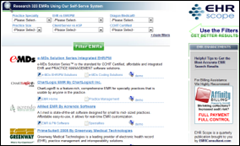






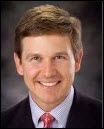




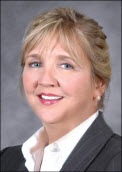
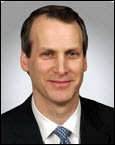
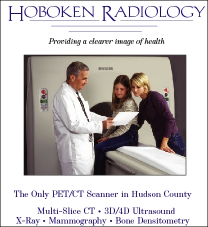


Re: Walmart Health: Just had a great dental visit this morning, which was preceded by helpful reminders from Epic, and…